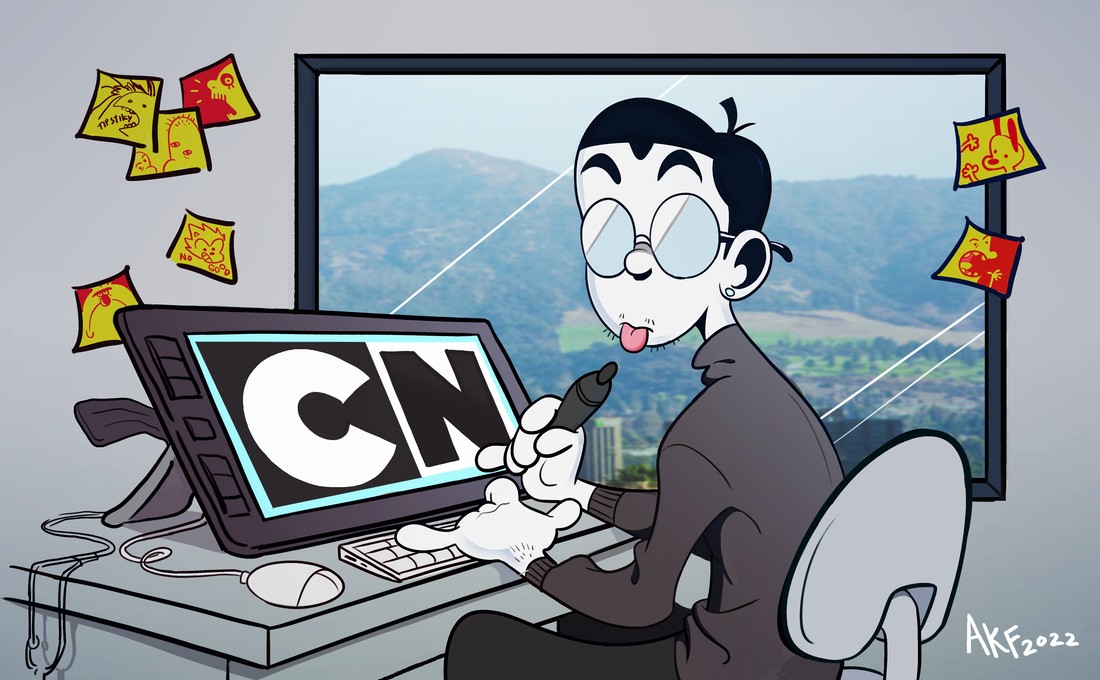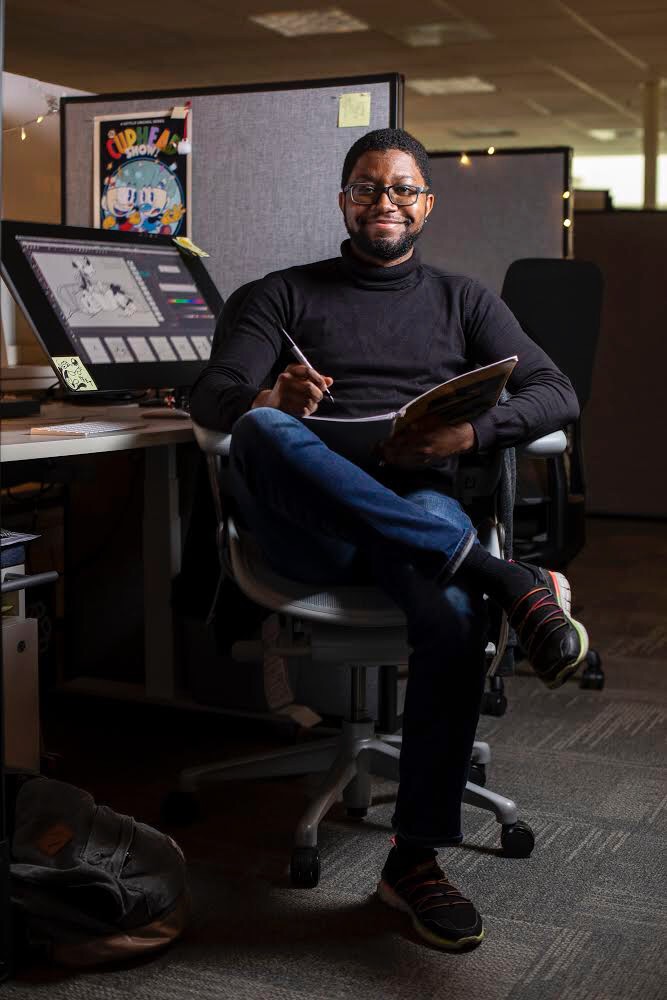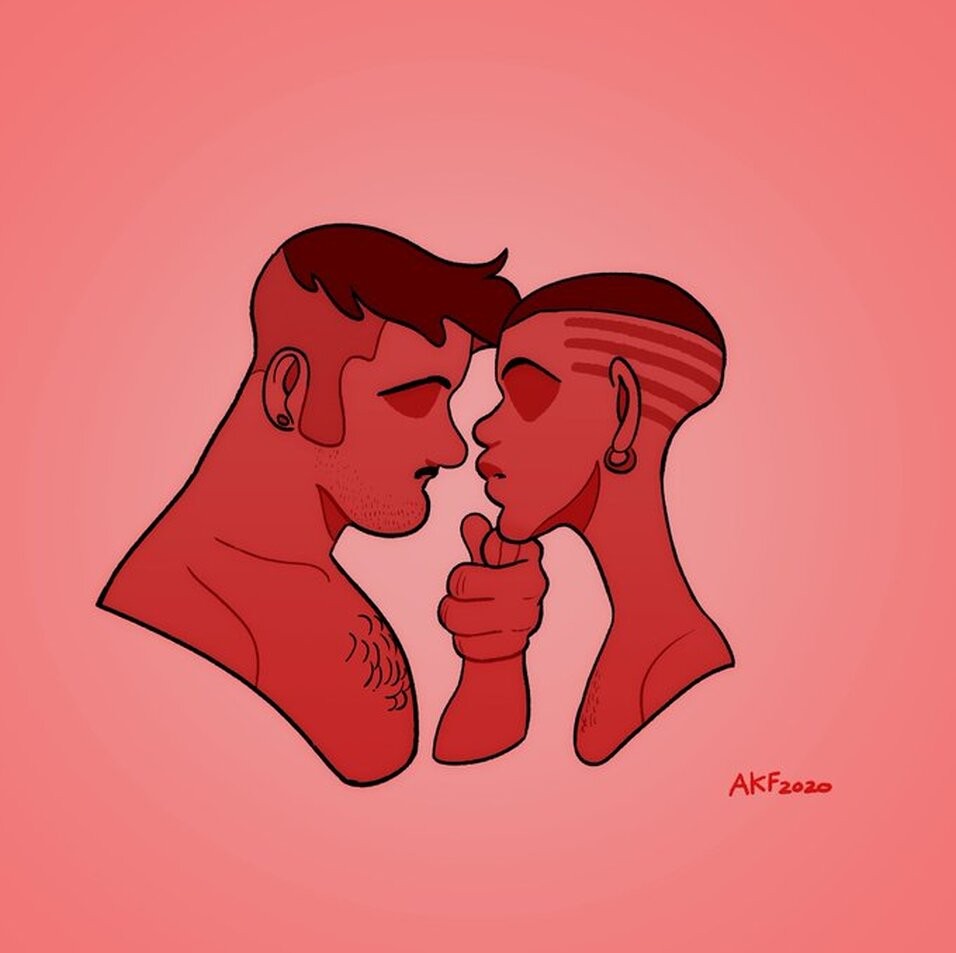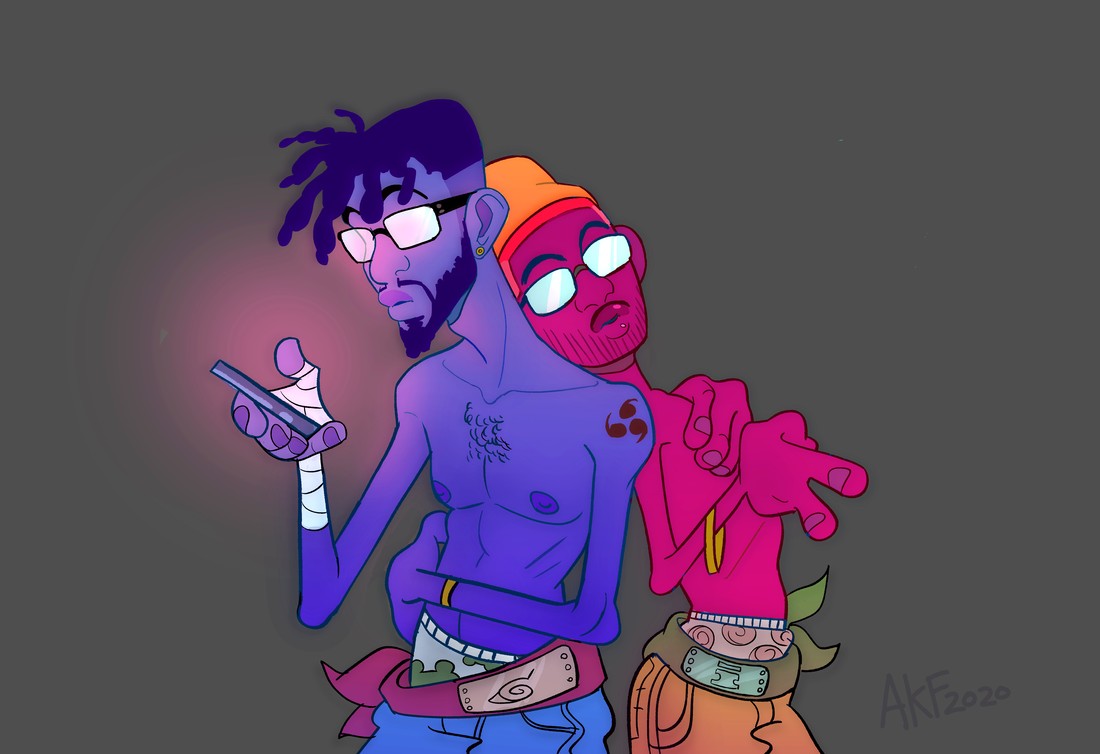Alright – so today we’ve got the honor of introducing you to Austin Faber. We think you’ll enjoy our conversation, we’ve shared it below.
Austin, thanks for joining us, excited to have you contributing your stories and insights. How did you learn to do what you do? Knowing what you know now, what could you have done to speed up your learning process? What skills do you think were most essential? What obstacles stood in the way of learning more?
I started taking animation seriously about a year before I went to college, but I wasn’t entirely sure what I was doing. I knew animation schools were competitive, so I honestly just looked up students at schools like Sheridan, Ringling, and Calarts and tried to copy what they did.
Most of my learning was independent since I learn better on my own schedule, so I spent a lot of time life drawing in my sketchbook – probably 2-3 hours a day. Over the months I saw slight improvement, so that kept me motivated. There’s not much I would change about the process other than allowing myself to make more mistakes – once my improvement started gaining attention I think my progress slowed down a bit.
In my field, any pro will tell you that the fundamentals are key – so thats really most there was to my learning. I already had a pretty strong artistic voice, but my actual drawing skills were very weak – so I had to work extra hard to become ready for art school applications. Thankfully, I got in and I’ve been in animation ever since.


Austin, before we move on to more of these sorts of questions, can you take some time to bring our readers up to speed on you and what you do?
I’m a Storyboard Artist and Character Designer in the animation industry, and I help direct the non-profit organization, Black N Animated, in my spare time. I made an award winning stop motion film in college, been featured on nearly a dozen professional panels, and taken online leadership courses at Harvard University.
Like most animators, I’ve loved art all my life – though my road getting here was rough and indirect. I never took art classes as a kid and, being the only artist in my family, my parents didn’t always have the tools to help me the way I needed – though they did their best. My parents are two genius-level scholars, so I thankfully I inherited their resourcefulness and tenacity, though i definitely didn’t inherit their book smarts and willingness to perform well in school (haha). Like most art kids, I would draw in class and daydream instead of doing geometry homework, but I always had big dreams and was told I was an unusually ambitious child, just not for academia.
Now in the industry, even amongst my diverse group of peers, I tend to stick out like a sore thumb. I’m still not always sure why, but I have been told by loved ones that I’m just unapologetically myself – and I tend to prefer sincere connection over forced interactions. It’s sort of weird to talk about yourself in the third-person, but I do notice I have a magnetism to my personality – and I’m rarely afraid to speak my mind (my coworkers affectionally call them my Ted Talks).
I honestly never wanted to work in animation, as I thought it’d be tedious. After my internship with the Disney College Program (DCP) I did at 19, I learned it was more than just drawing pictures over and over. The DCP was not an art internship, but being at Disney gave me the exposure I needed to pursue this more seriously.
Nearly a decade later, I’ve now worked on Emmy nominated shows and gotten to work and collaborate with incredible powerhouses like Dana Terrace, Minkyu Lee, James Baxter, Richard Chavez, Marina Gardner…too many to name haha.
Right now, since work in the industry has dried up, I’ve been focusing my efforts in rebranding Black N Animated and giving back to my community. Helping mentor and nurture young talent is one of my additional passions, so it’s nice I get to do that for the time being.


Is there mission driving your creative journey?
In short, I want to make the animation industry more accessible for black, brown, and middle eastern kids – especially those outside the states.
My creative goals adjusted a bit after I broke into animation and saw the disproportionate amount of homogeneous groups running studios and telling stories. I always wanted to be a director and show-runner, but I knew I’d want to bring in new voices if I were to do that, so I’m doing my best to give back to my community, and reach out to others outside our sphere, as much as I can.


What’s a lesson you had to unlearn and what’s the backstory?
We are taught an incomplete lesson in animation school. We were told to “be nice to everyone you work with, since you never know who will be hiring you in the future,” and while that’s a great motto to live by, I quickly realized this often does not apply to those with disproportionate influence.
I say incomplete lesson because it unfortunately does nothing to teach students what steps to take when they encounter abusive bosses, unstable working conditions, or basic unfair treatment. The instinct of artists is to be non-confrontational, but it also allows many important issues to be swept under the rug – and they should be given the tools to appropriately and professionally deal with said situations.
Thankfully, I had a great mentor outside of school, who gave me a heads up on how to tactfully handle workplace conflicts, but avoiding it all together was hard lesson to unlearn.


Contact Info:
- Website: http://www.austinfaber.com/
- Instagram: https://www.instagram.com/roxinrox/
- Linkedin: https://www.linkedin.com/in/austinkfaber/
- Twitter: https://twitter.com/roxinrox


